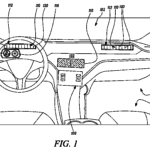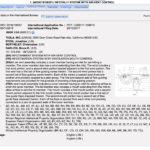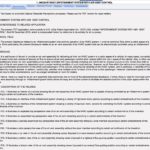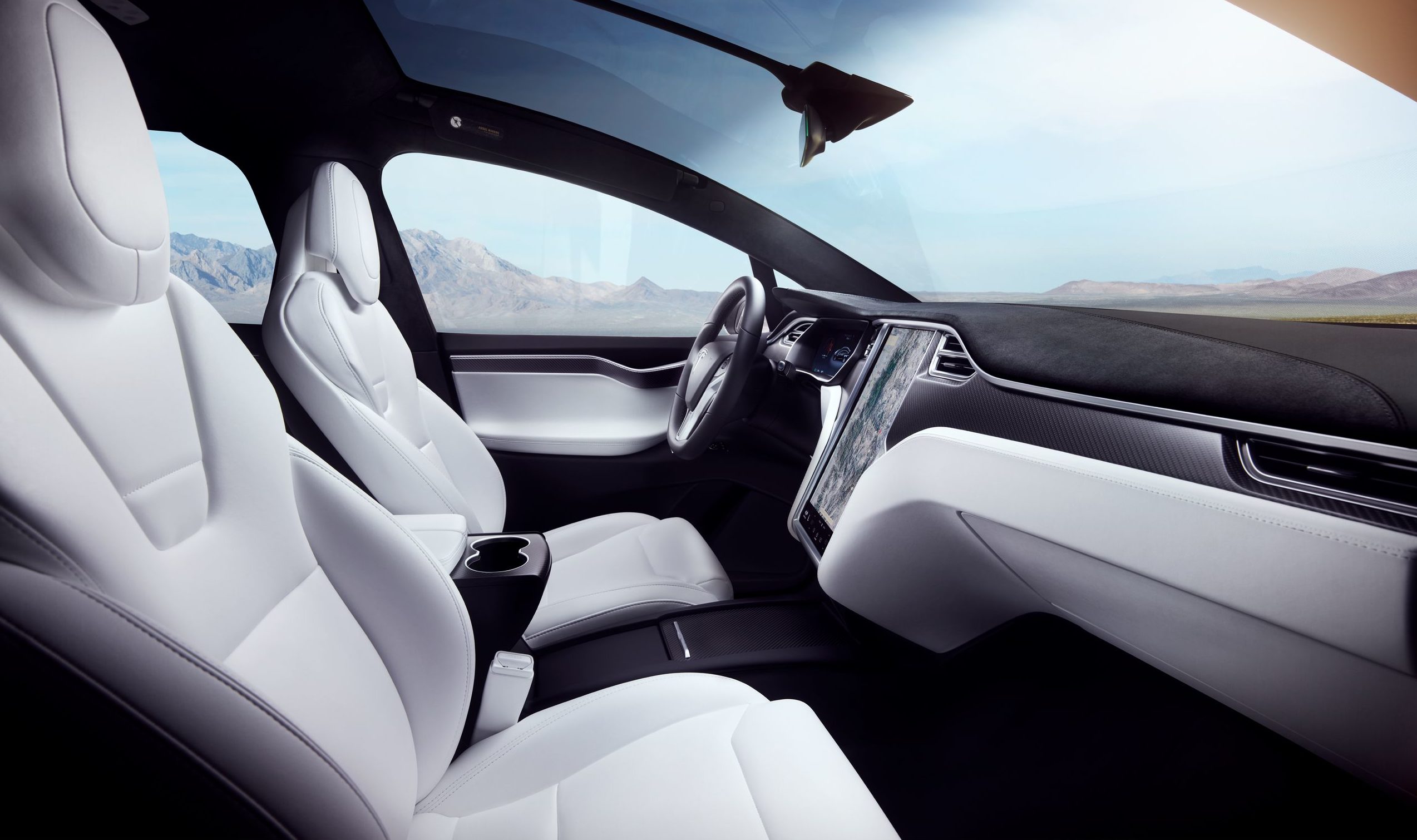

News
Tesla patent hints at possible Model S, X refresh with new HVAC system
Details coming out of a new international patent application filed by Tesla reveals an infotainment-controlled HVAC system that could be intended for an upcoming Model S and Model X refresh.
A similar HVAC control system has already been rolled out by Tesla in its compact electric sedan, the Model 3. The Model 3 uses two intersecting planes of air for vertical control. Lateral fins hidden within the electric car’s dashboard provide horizontal air control while also providing a clean, minimalistic look. Tesla’s filed patent describes features that are similar to Model 3’s air vent system that’s controlled through its 15″ center touchscreen. Patent US2017 / 058015 titled “Infotainment System with Air-Vent Control,” describes a system to manipulate the airflow inside the vehicle through the vehicle’s media control unit.
The air vent assembly includes a first vent portion placed in front of the driver and a second vent portion that is placed in front of the passenger. These vent portions may be elongated as compared to traditionally known designs of air vent assemblies in that they have longer, more linear vents instead of more circular or boxy vents.
Embodiments of the present disclosure enhance the capabilities of this air vent assembly to provide air flow in a leftward, rightward, onward, and a split configuration using a single rotary actuator. In certain embodiments, the user interface may also allow a user to define the degree to which the vents may cause air to flow in the rightward, leftward, or split direction.
Similar to Model 3’s unique HVAC system, the one described in the patent application also allows passengers to customize the airflow within the vehicle according to passenger preferences.
In certain embodiments, the user customizes the airflow, for example, the specific direction of the airflow. This can allow for a more comfortable experience for the occupants of a vehicle. For example, certain occupants may desire for air to be directed towards themselves while other occupants may desire the temperature of the vehicle cabin to be set to a certain value without having air directly impinging on themselves.
An illustration of Tesla’s recent patent on an infotainment-controlled HVAC system. [Credit: World Intellectual Property Organization]
With anticipation running high that Model S and Model X is due for a refresh, an update to its HVAC system would not only unify the dashboard design across its fleet of vehicles but could also simplify production. For one, Tesla’s unique air vent system requires less hardware and thus minimizes the need for multiple suppliers. Using a simpler design, Tesla’s thinner HVAC system can efficiently utilize space in the dashboard, and provide a much more expansive interior feel. Such a system, as proven by the Model 3, would also give drivers better road visibility.
While Tesla’s international patent application did not specifically mention a vehicle model, illustrations included in the document resembles the design of the Model S and Model X’s dashboard. Figure 1, for example, features a dashboard that is similar to the all-electric luxury sedan and SUV. Apart from a similar-looking instrument cluster and infotainment system, the illustration also features a dashboard curvature that’s aligned with that of Model S and Model X’s current design. Armrest cupholders located between the front seats at the bottom of Fig. 1 also draws resemblance to ones found in the Model S and Model X.
Adopting an HVAC system that’s akin to the Model 3 for the Model S and Model X would likely be a welcomed change for Tesla enthusiasts. During his testing and teardown of the vehicle earlier this year alone, Detroit veteran Sandy Munro, who issued a harsh critique of the electric car’s build quality, admitted in a later comment that the Model 3’s HVAC system was “brilliant,” citing its simple yet ingenious design.
Aside from major refreshes, Tesla continues to improve the components of its vehicles over time. As revealed by Elon Musk in a recent conversation with Consumer Reports’ Jake Fisher, the Tesla CEO noted that improvements have been rolled out to the Model 3 since its production began, from better interior materials that reduce road noise to a software update that improves the vehicles’ controls. Tesla’s flagship Model S and Model X are no strangers to this, and a revamped HVAC system can only improve the experience for its driver and passengers.

News
Another Tesla Model 3 variant sold out for January 2026 in China
A look at Tesla China’s order page shows that new Model 3 LR RWD orders now have an estimated delivery date of February 2026.
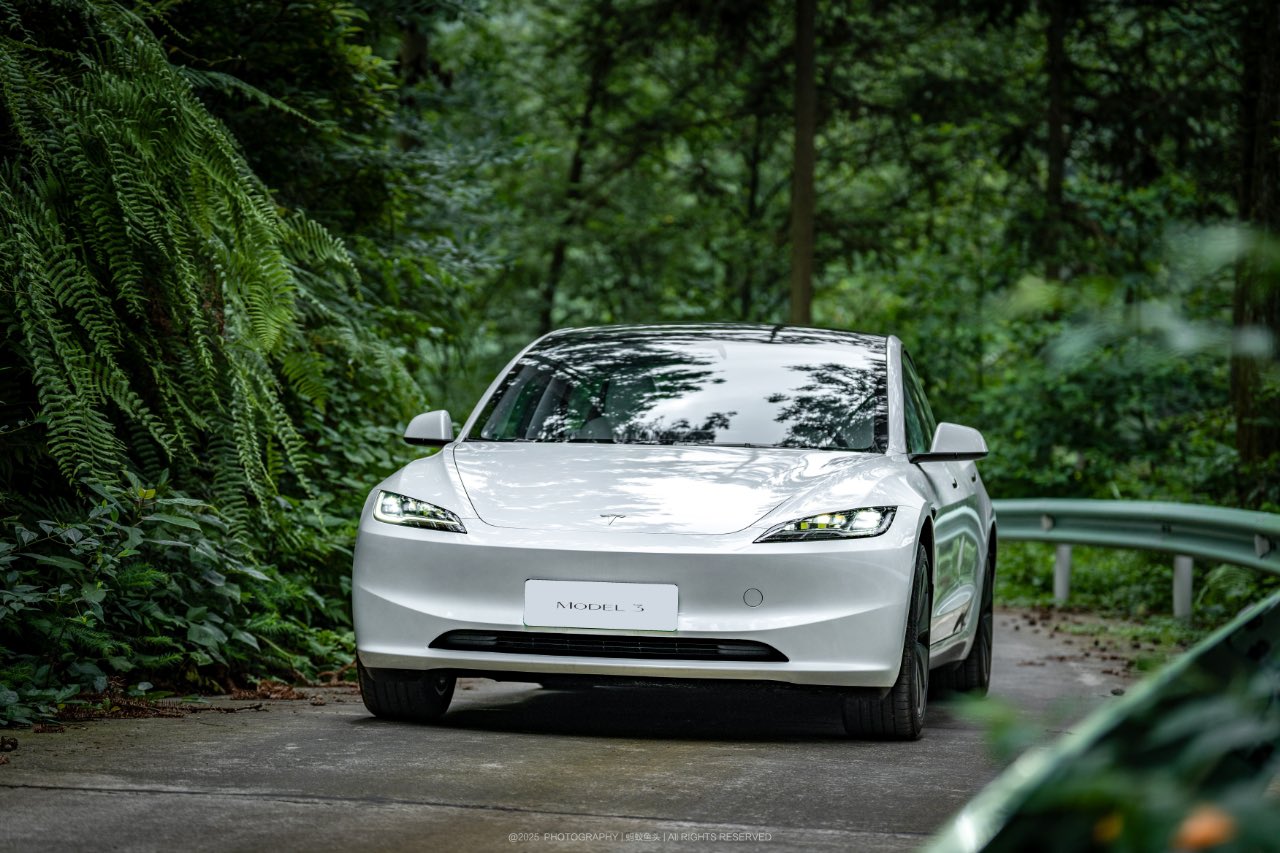
Another Tesla Model 3 variant in China appears to have sold out for January 2026, with the vehicle now showing an estimated delivery date of February 2026 for new orders. This bodes well for the all-electric sedan, which has maintained notable sales despite more affordable rivals like the Xiaomi SU7 and its crossover sibling, the Model Y.
Model 3 LR RWD joins February 2026 queue
A look at Tesla China’s order page for the all-electric sedan shows that new Model 3 Long Range Rear Wheel Drive orders now have an estimated delivery date of February 2026. Priced from RMB 259,500 ($36,810), the LR RWD sits as the second-lowest-priced trim in Tesla China’s four-variant Model 3 lineup. The move follows a similar delivery timeframe for the Model 3 Performance, which remains the most expensive option for the vehicle, as noted in a CNEV Post report.
The estimated delivery dates of the two remaining Model 3 variants remain unchanged for now. The base RWD version, starting at RMB 235,500, and the LR AWD variant, priced from RMB 285,500, both continue to list estimated delivery times of 4-6 weeks. Tesla China, for its part, has continued to list in-stock Model 3 vehicles and is actively encouraging buyers to select inventory units for delivery before the end of the year.
Model Y delays and policy shifts
Delivery timelines for the Model Y in China are also stretching into 2026. All customized Model Y variants now show February 2026 as their estimated delivery date, except for the entry-level version, which still lists January 2026. Tesla has been urging customers since November to prioritize purchasing inventory vehicles, a push aimed at maximizing year-end deliveries.
Timing matters for Chinese buyers due to upcoming changes in government incentives. China’s new energy vehicle purchase tax exemption will be scaled back in 2026, which means customers who take delivery next year could face higher tax costs compared to those who are able to receive vehicles before the end of the year.
As per data from the China Passenger Car Association, Tesla recorded retail sales of 73,145 vehicles in November, down 0.47% year over year. From January through November, Tesla’s retail sales in China totaled 531,855 units, a 7.37% year-over-year drop.
News
Wedbush’s Dan Ives sees ‘monster year’ ahead for Tesla amid AI push
In a post on X, the analyst stated that the electric vehicle maker could hit a $3 trillion market cap by the end of 2026 in a bullish scenario.

Wedbush analyst Dan Ives is doubling down on Tesla’s (NASDAQ:TSLA) long-term upside. In a post on X, the analyst stated that the electric vehicle maker could hit a $3 trillion market cap by the end of 2026 in a bullish scenario, thanks to the company’s efforts to develop and push its artificial intelligence programs.
An aggressive valuation upside
Ives, Wedbush’s global head of tech research, stated in his post that Tesla is entering a pivotal period as its autonomy and robotics ambitions move closer to commercialization. He expects Tesla’s market cap to reach $2 trillion in 2026, representing roughly 33% upside from current levels, with a bull case up to a $3 trillion market cap by year-end.
Overall, Ives noted that 2026 could become a “monster year” for TSLA. “Heading into 2026, this marks a monster year ahead for Tesla/Musk as the autonomous and robotics chapter begins. We believe Tesla hits a $2 trillion market cap in 2026 and in a bull case scenario $3 trillion by end of 2026… as the AI chapter takes hold at TSLA,” the analyst wrote.
Ives also reiterated his “Outperform” rating on TSLA stock, as well as his $600 per share price target.
Unsupervised Full-Self Driving tests
Fueling optimism is Tesla’s recent autonomous vehicle testing in Austin, Texas. Over the weekend, at least two Tesla Model Ys were spotted driving on public roads without a safety monitor or any other occupants. CEO Elon Musk later confirmed the footage of one of the vehicles on X, writing in a post that “testing is underway with no occupant in the car.”
It remains unclear whether the vehicle was supported by chase cars or remote monitoring, and Tesla has not disclosed how many vehicles are involved. That being said, Elon Musk stated a week ago that Tesla would be removing its Safety Monitors from its vehicles “within the next three weeks.” Based on the driverless vehicles’ sightings so far, it appears that Musk’s estimate may be right on the mark, at least for now.
News
Production-ready Tesla Cybercab hits showroom floor in San Jose
Tesla has implemented subtle but significant updates to both the Cybercab’s exterior and interior elements.
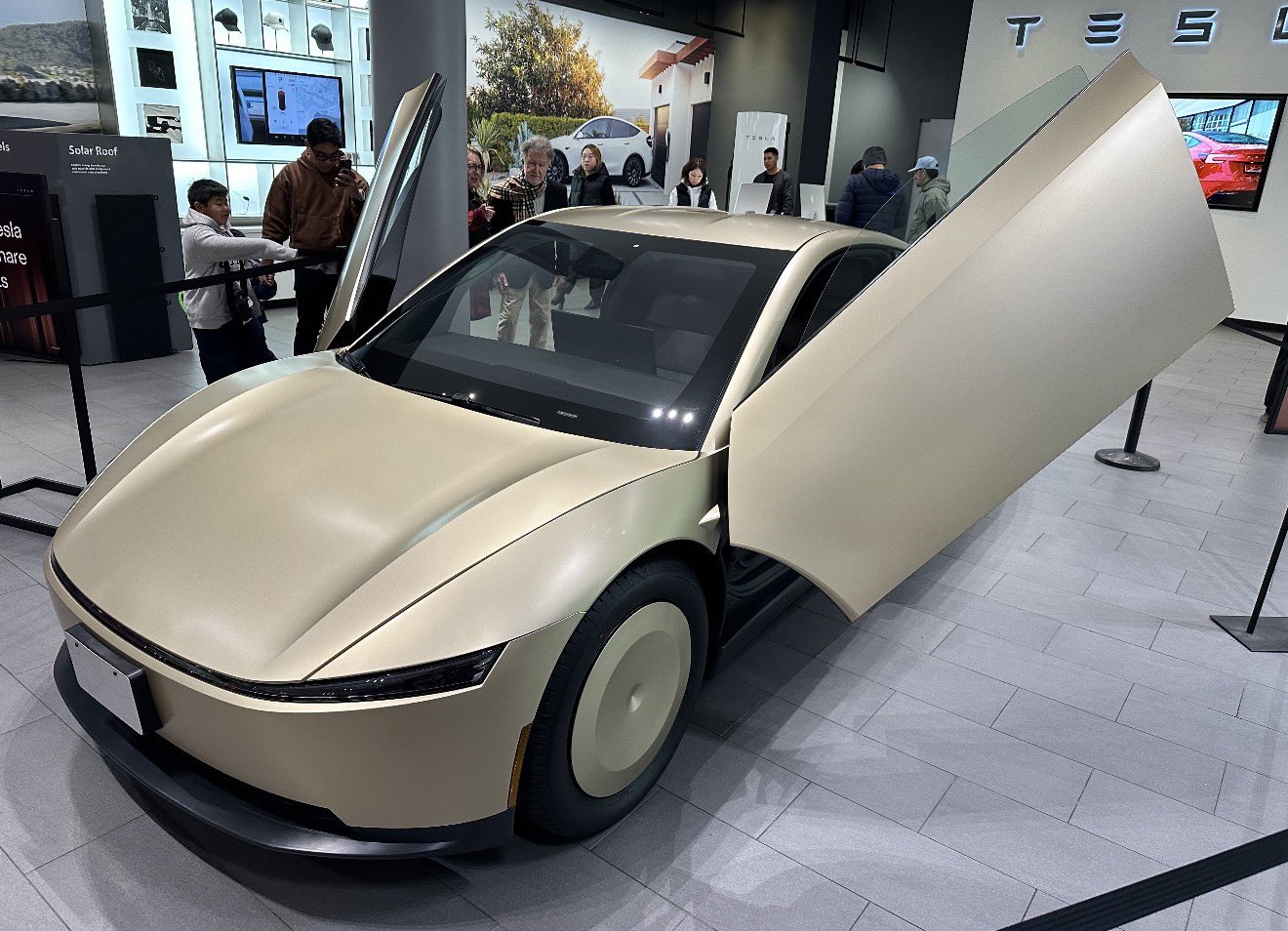
Tesla has showcased what appears to be a near-production-ready Cybercab at its Santana Row showroom in San Jose, California, giving visitors the closest look yet at the autonomous two-seater’s refined design.
Based on photos of the near-production-ready vehicle, the electric vehicle maker has implemented subtle but significant updates to both the Cybercab’s exterior and interior elements, making the vehicle look more polished and seemingly more comfortable than its prototypes from last year.
Exterior and interior refinements
The updated Cybercab, whose photos were initially shared by Tesla advocate Nic Cruz Patane, now features a new frameless window design, an extended bottom splitter on the front bumper, and a slightly updated rear hatch. It also includes a production-spec front lightbar with integrated headlights, new wheel covers, and a license plate bracket.
Notably, the vehicle now has two windshield wipers instead of the prototype’s single unit, along with powered door struts, seemingly for smoother opening of its butterfly doors. Inside, the Cybercab now sports what appears to be a redesigned dash and door panels, updated carpet material, and slightly refined seat cushions with new center cupholders. Its legroom seems to have gotten slightly larger as well.
Cybercab sightings
Sightings of the updated Cybercab have been abundant in recent months. At the end of October, the Tesla AI team teased some of the autonomous two-seater’s updates after it showed a photo of the vehicle being driven through an In-N-Out drive-through by employees in Halloween costumes. The photos of the Cybercab were fun, but they were significant, with longtime Tesla watchers noting that the company has a tradition of driving its prototypes through the fast food chain’s drive-throughs.
Even at the time, Tesla enthusiasts noticed that the Cybercab had received some design changes, such as segmented DRLs and headlamps, actual turn signals, and a splitter that’s a lot sharper. Larger door openings, which now seem to have been teasing the vehicle’s updated cabin, were also observed at the time.
